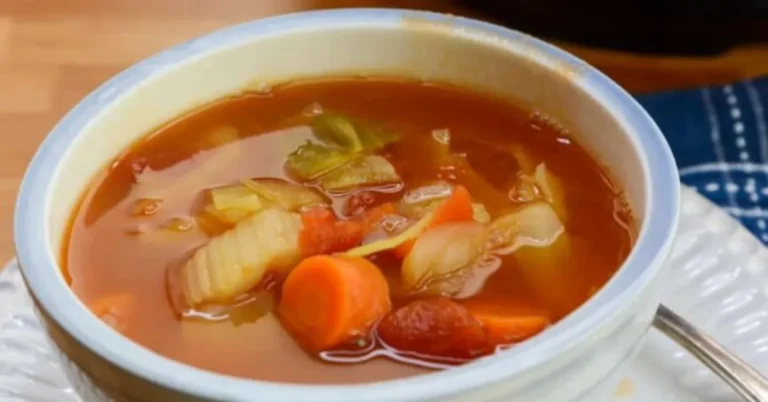Homemade Cabbage Soup
Cabbage soup embodies rustic simplicity with a nourishing punch. The undisputed star is cabbage, offering an earthy sweetness once it softens in the pot. I like to create a mosaic of vegetables—carrots, celery, and potatoes—layered with the warmth of garlic and the quiet complexity of bay leaves. The result? A soul-soothing, hearty broth teeming with robust, garden-fresh flavor.
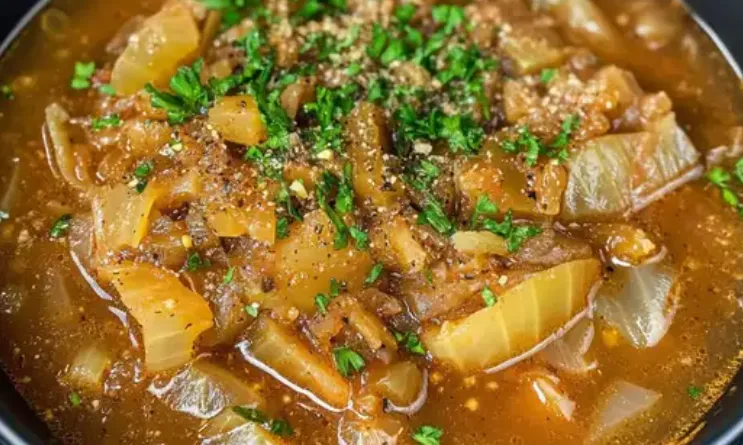
Selecting the Best Ingredients
Great soup starts with impeccable ingredients. Here’s how I choose each one for optimal flavor and texture:
Cabbage – Seek out crisp, tight heads with no browning. Green cabbage is classic, but Savoy and Napa varieties add a nuanced crunch and sweetness.
Vegetables – Choose bright, blemish-free carrots and celery. Potatoes should be firm and spotless—these subtle differences make a big impact.
Herbs and Spices – Fresh thyme or parsley infuse life into each spoonful. If using dried herbs, check their potency and aroma.
Broth – Opt for a high-quality, low-sodium vegetable or chicken broth. It’s the canvas upon which everything else shines.
Ingredients
- 1 medium green cabbage, chopped
- 2 medium carrots, finely diced
- 2 celery stalks, diced
- 1 medium yellow onion, chopped
- 3 cloves garlic, minced
- 2 medium potatoes, diced
- 8 cups vegetable or chicken broth
- 1 (14.5 oz) can diced tomatoes, undrained
- 2 bay leaves
- 1 tsp dried thyme
- Salt and black pepper, to taste
- 2 tbsp olive oil
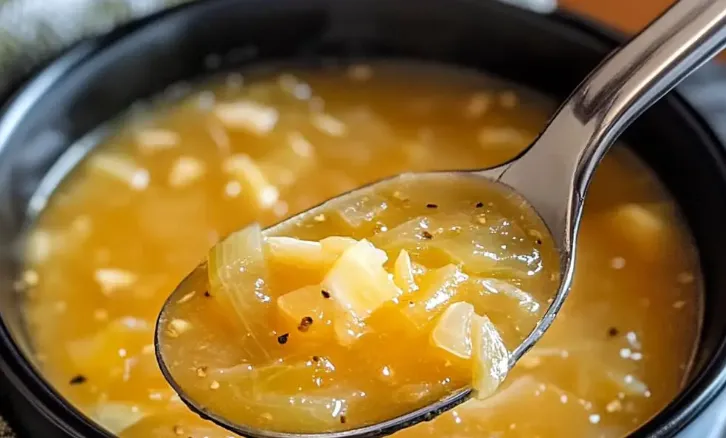
Instructions to Create the Dish
Preparing the Base
Heat olive oil in a large, heavy-bottomed pot over medium flame. Once it glistens, toss in the onions and let them sizzle until translucent—roughly 5 minutes. The fragrance is deeply comforting. Stir in the garlic and cook for another 30 seconds, just until the aroma intensifies.
Adding Vegetables
Tumble in the carrots, celery, and potatoes. Sauté them for 5–7 minutes, allowing their natural sugars to awaken and caramelize slightly. The colors—orange, green, gold—make the pot look like a painter’s palette.
Incorporating Cabbage and Broth
Add the cabbage next. Stir it gently until it softens and wilts, about 2 minutes. Pour in the broth and canned tomatoes. Nestle in the bay leaves and sprinkle the thyme. Bring the whole pot to a soft boil, then reduce to a low simmer, cover, and let it meld for 30–40 minutes. The transformation is slow, but magical.
Final Seasoning
As the soup simmers, give it the occasional stir and taste. Just before ladling into bowls, fish out the bay leaves and season with salt and pepper until it sings. A small pinch can elevate the entire dish.
Times, Calories & Servings
Prep Time: 15 minutes
Cook Time: 40 minutes
Total Time: 55 minutes
Calories: ~120 per serving
Yields: 6 servings
Tips for Best Flavors and Textures
Here are a few secret touches I’ve discovered:
- A splash of apple cider vinegar at the end brightens the entire profile.
- Let it rest after cooking—it gets even better the next day.
- Stir in chickpeas or shredded chicken for a protein-rich version.
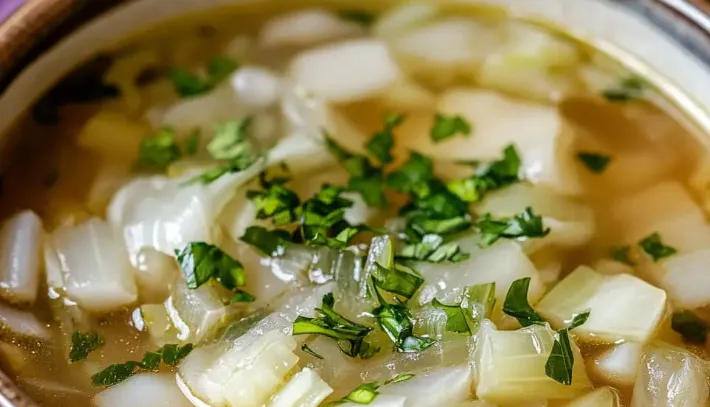
Serving Suggestions
As an Appetizer
Serve in small bowls with a dusting of parsley. It’s the perfect prelude to a larger meal.
As a Main Course
Pair with rustic bread or a fresh side salad. It’s hearty enough to hold its own.
As a Side Dish
It complements roasted meats or grilled mains beautifully, offering balance and contrast.
Nutritional Information
Calories: ~120
Protein: 3g
Carbohydrates: 24g
Fat: 3g
Nutrients: High in Vitamin C, Vitamin K, and fiber
How to Store
If leftovers remain (a rarity!), let the soup cool completely. Store in an airtight container in the fridge for up to five days. For long-term storage, freeze individual portions. Thaw and reheat as needed—perfect for busy weekdays.
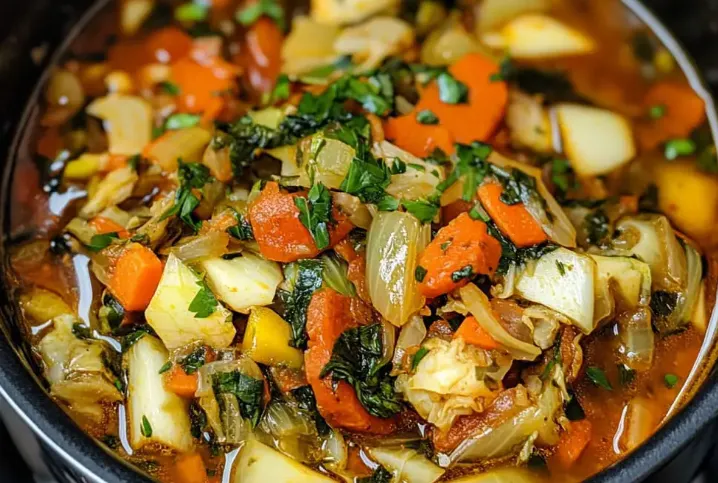
The Best Variations of the Dish
Vegetarian Version – Stick with veggie broth and add lentils or beans for extra protein.
Keto Version – Ditch the potatoes for zucchini or cauliflower for a low-carb twist.
Spicy Version – Stir in crushed red pepper or chopped jalapeños for a fiery kick.
Herbed Version – Try dill or rosemary to give the soup a fresh herbal identity.
Frequently Asked Questions
Can I use frozen cabbage?
Yes. Thaw it before use for the best texture.
How do I make this soup vegan?
Use plant-based broth and double-check that all ingredients are vegan-friendly.
Can I prep it ahead of time?
Absolutely. It’s even better after a night in the fridge—perfect for batch cooking.
Conclusion
Homemade cabbage soup is more than just sustenance—it’s a return to basics, to warmth, to the kind of food that feeds both the body and the spirit. Whether shared or savored solo, it’s a bowlful of comfort waiting to be made.




